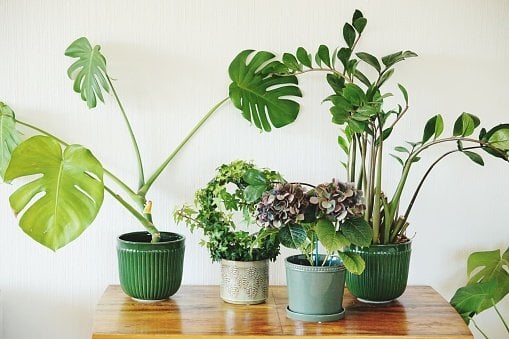Indoor greenery is a key element of decor in any home, bringing vitality and brightness. The right bit of foliage or flowers can transform the atmosphere of any room—but their transformational properties run deeper than simply adding a pop of color. In reality, the plants in your home are actually working around the clock to improve your health and make you feel better, purifying the air of everything from harsh chemicals to mold spores to carbon dioxide.
Integrating attentive plant care into work and school schedules, workouts, and brunch, however, is easier said than done, and many of us are turning to fake plants to add a sense of green to our decor. Although you may not have to worry about watering them when you go on vacation, artificial plants are unable to work the same magic for your physical health, mental health, and overall well-being. Even if you suffer from more of a brown thumb than a green thumb, you don’t need to sacrifice the benefits of having real plants in your home. Here are 8 low-maintenance plants that will not only enhance your space but also your quality of life.

1. Snake Plant (Sansevieria)
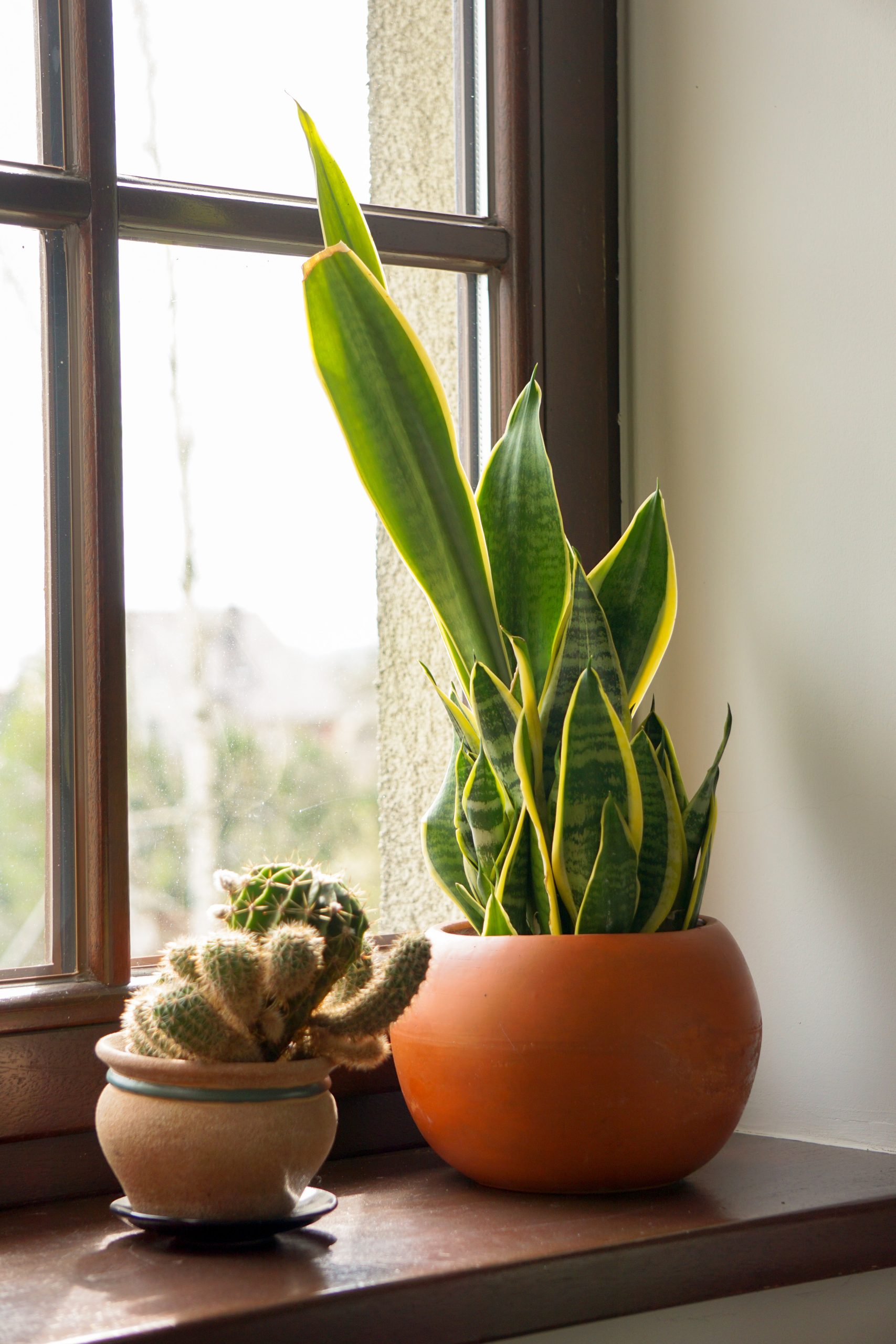
Snake Plants are hands-down one of the best plants you can have in your home. In addition to filtering the carbon dioxide in your air into oxygen (ramping up its filtration at night while you sleep), Snake Plants work to pull in harsh chemicals from your environment. On top of all that, they’re extremely durable, function well in low light, and only need to be watered once a month.
2. Spider plant (Chlorophytum comosum)
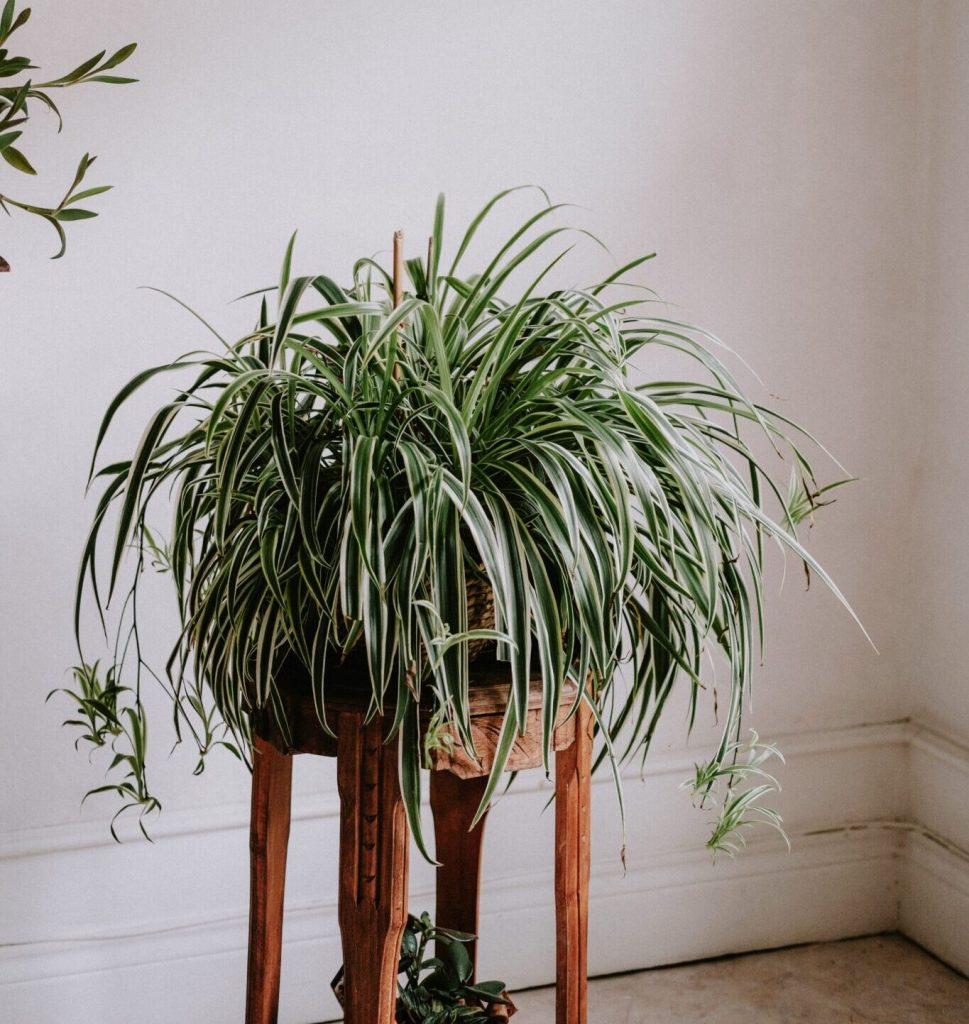
Spider Plants are real superheroes when it comes to indoor plants. In one study, hospital patients recovering from surgery who were placed in rooms with Spider Plants had lower blood pressure as well as lower levels of pain, anxiety, and fatigue than patients who did not have plants in their rooms. Expert air purifiers, Spider Plants efficiently remove toxic agents, chemicals, and particles from the air including dust mites, carbon monoxide, and formaldehyde. They’re forgiving of both overwatering and underwatering and are happy in low-light conditions. They also produce more chlorophyll than other house plants which means more oxygen!
3. Pothos (Epipremnum aureum)
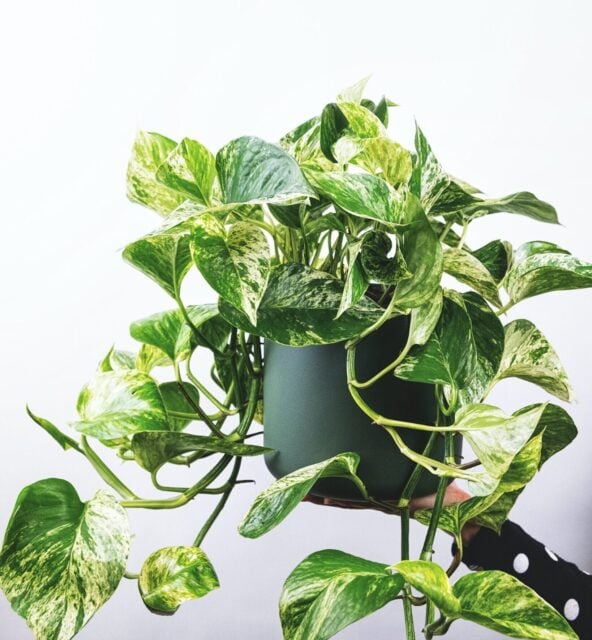
Pothos or the Devil’s Ivy, is one of the easiest house plants to grow. Your Pothos won’t mind at all if you forget to water it or if your room doesn’t get any sunlight. It will happily work to remove formaldehyde, benzene, and carbon monoxide from the air while you live your best life.

4. Lavender (Lavandula)
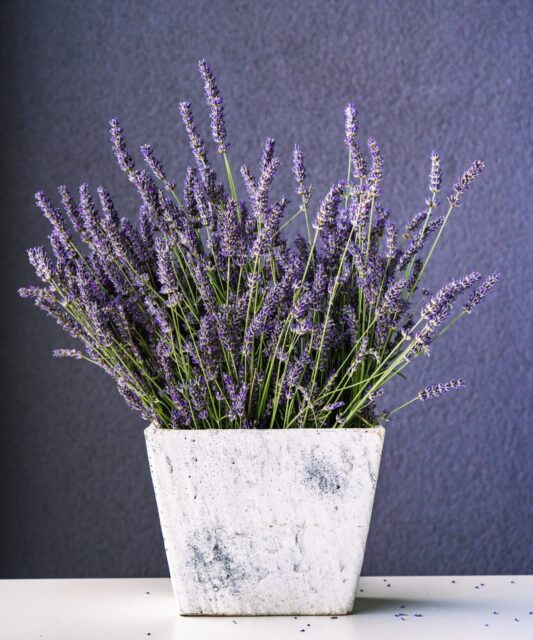
Lavender is a gorgeous and popular herb you probably know well for its color and calming smell. The stress-relieving scent of lavender has made it the perfect addition to self-care products and is also what makes it the perfect therapeutic house plant. The presence of lavender can help to reduce headaches, anxiety, and depression and even improve restlessness and insomnia. Native to the Mediterranean, Lavender does need bright sunlight to function but thrives without much water.
5. Aloe Vera (Aloe Barbadensis Miller)
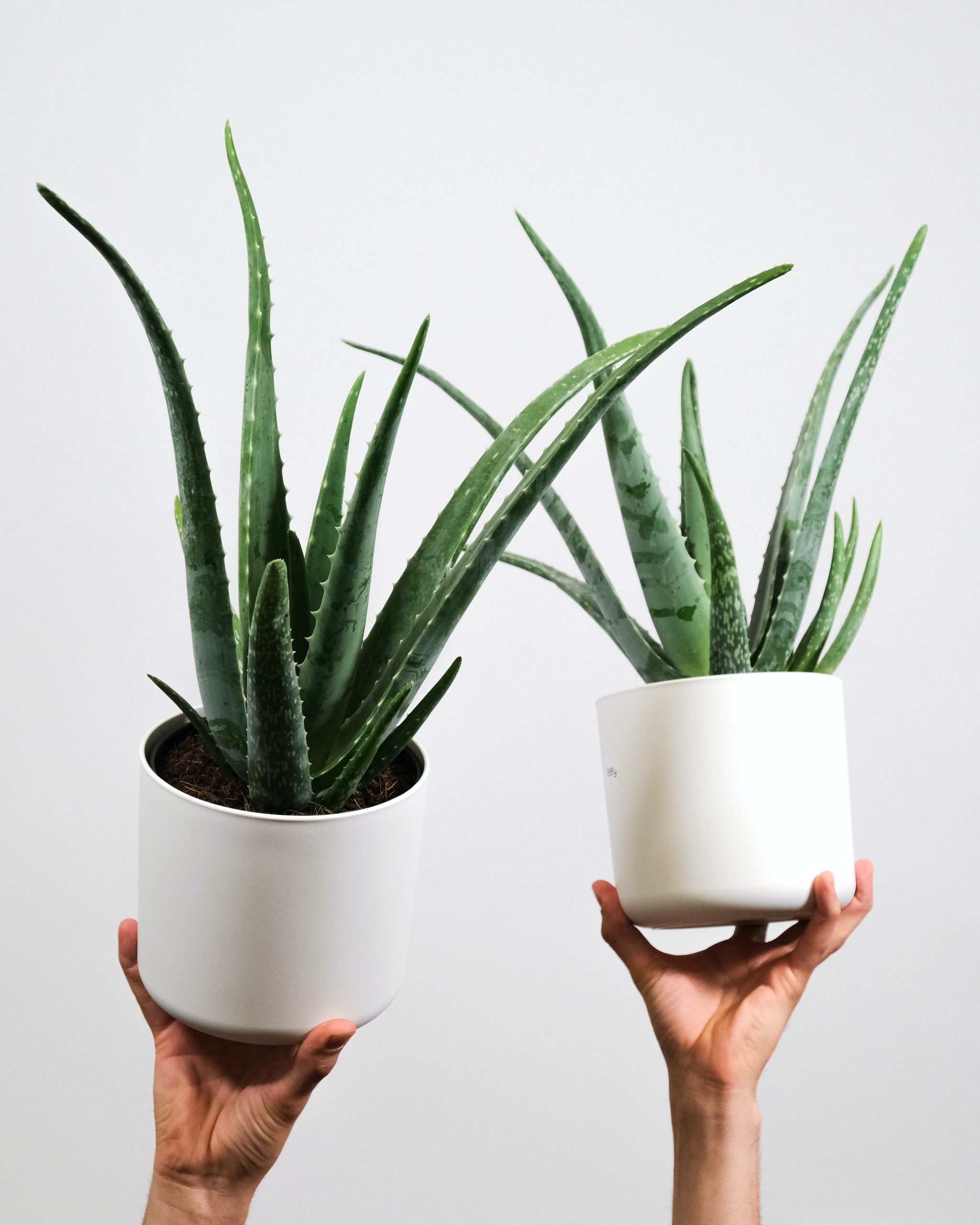
From offering sunburn relief to being a key ingredient in hair-rejuvenating masks, Aloe can do it all. Although it prefers more light to our friends the Snake Plant and Pothos, Aloe is incredibly easy to keep alive. Like the Snake Plant, it releases oxygen and absorbs carbon dioxide while going above and beyond to absorb chemical particles from cleaning agents, paint, and more. You can even use it in your skin and hair care routine or pop it into a smoothie for a nutrition boost.
6. Zanzibar Gem/ZZ Plant (Zamioculcas)
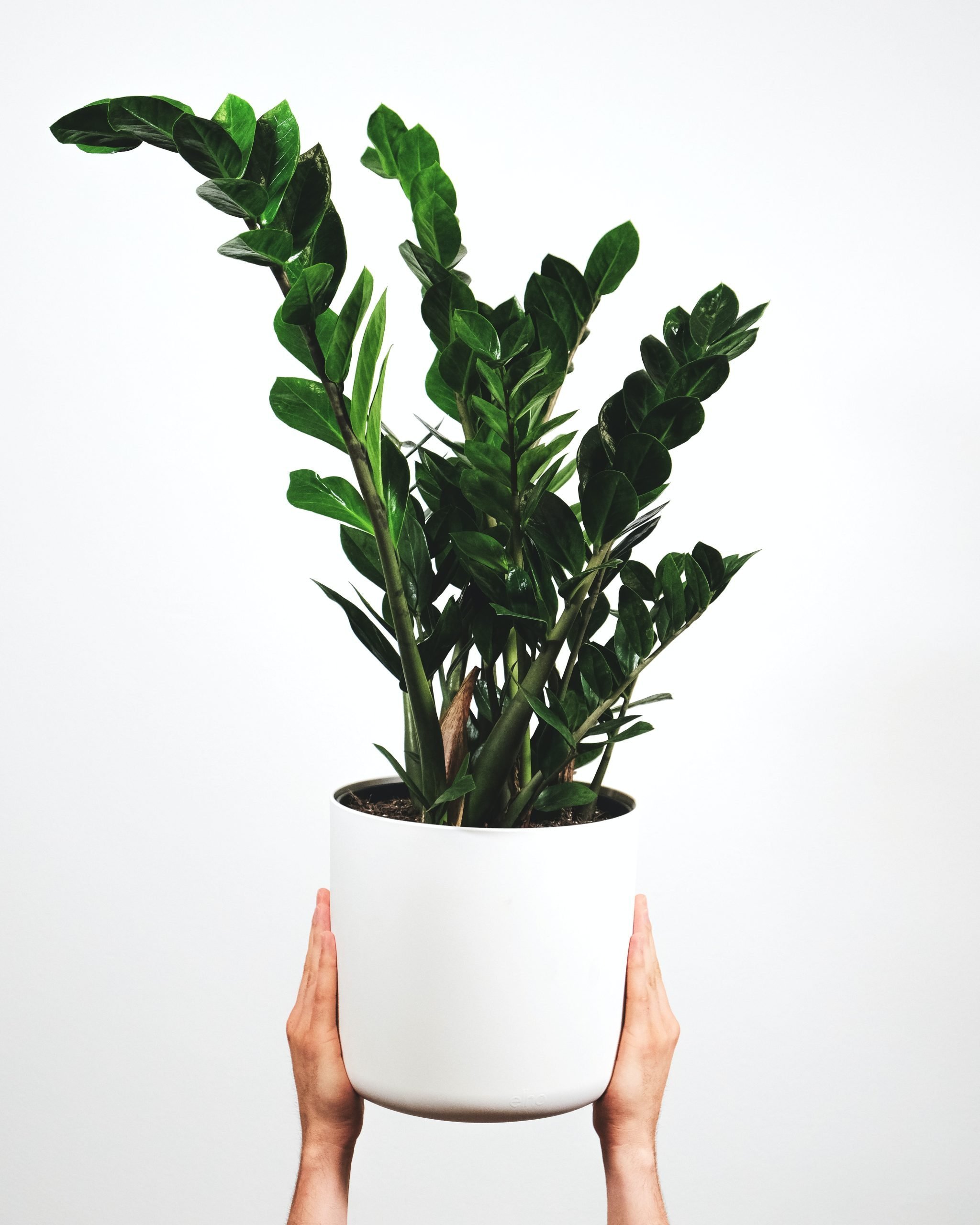
The ZZ Plant is one of the toughest plants out there. Like many of the other plants on this list, it’s happy in low light and is impressively drought-resistant, needing water no more than once every two weeks. They’re also known to clear the air of two powerful poisonous substances found in household cleaning products: toluene and xylene. On top of all that, they perform a process called Crassulacean Acid Metabolism, which generates fresh air and oxygen for your space all night long, making them a perfect bedroom plant.
7. English Ivy (Hedera Helix)
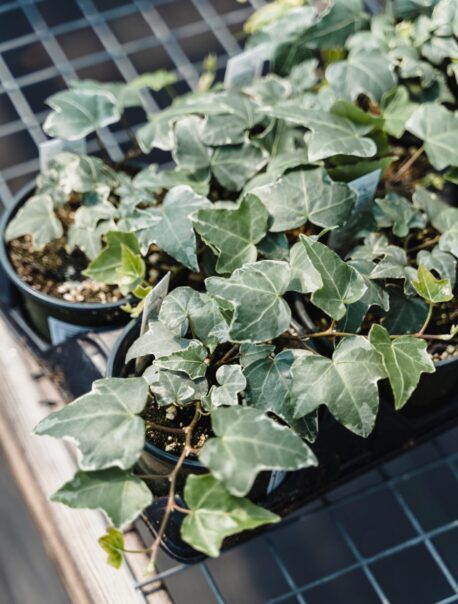
Although English Ivy might require a little more water and sunlight than some of the other plants on this list, it’s still a low-maintenance plant and an incredible option for those who may suffer from asthma, allergies, or bronchitis. It’s known to remove benzene and trichloroethylene in addition to reducing mold and fecal particles. It also works as a natural indoor humidifier, releasing moisture into the air to help make breathing easier.
8. Rosemary (Salvia Rosmarinus)
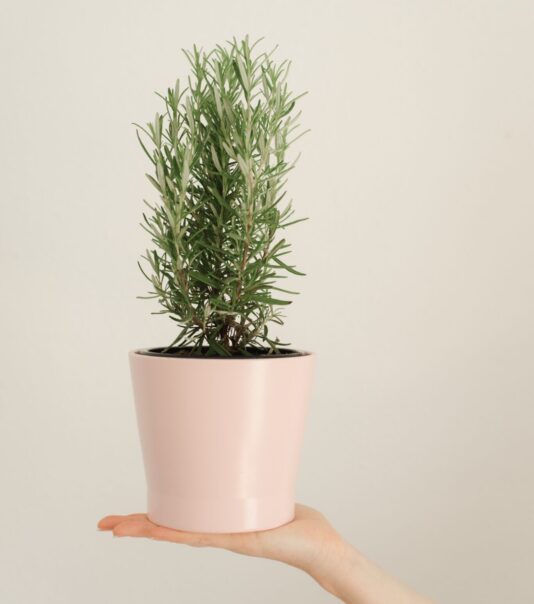
A beloved and well-known culinary herb, Rosemary has been used for its medicinal purposes for millennia. Like its Mediterranean cousin, Lavender, its aroma is one of its most powerful tools. The pine-like smell of Rosemary has been shown to improve memory, reduce headaches, ameliorate allergies and asthma, and even lower cortisol levels. On top of all that, you can reap its anti-inflammatory and digestive benefits by adding it to your dinner. Similar to Lavender, Rosemary does best with direct sunlight and dry soil.

